G Adventures Inca Discovery Tour: My Experience
My experience hiking along the Inca Trail was one of the best trips I have ever taken. Not only did I visit the world-famous site of Machu Picchu, but I also traveled around the Sacred Valley to visit local villages, ate amazing food in Cusco, and saw the Pacific Ocean from the shores of Lima. Here are more details about my amazing tour through Peru.
Day 2 - Fly to Cusco; have a logistics meeting to prepare for the Inca Trail and brief city tour; spend free time exploring Cusco.
 Cusco
Cusco
Day 3 - This is a jam-packed full day of exploring the Sacred Valley. We began with a weaving demonstration at the G Adventures sponsored co-op. Next we traveled to the rural village Cuyo Chico to see the process of making adobe mud houses and ceramic objects. You can purchase souvenirs that support the local people in both locations. These included activities were extremely special and gave me a great understanding of Peruvian culture. I enjoyed seeing some less-traveled areas and was happy that my tourism sponsored businesses that support these unique rural towns. Our group also got to visit two ruins sites for additional cost: Pisac and Ollantaytambo. We unanimously agreed to have this opportunity. We ended the day in the town of Ollantaytambo.
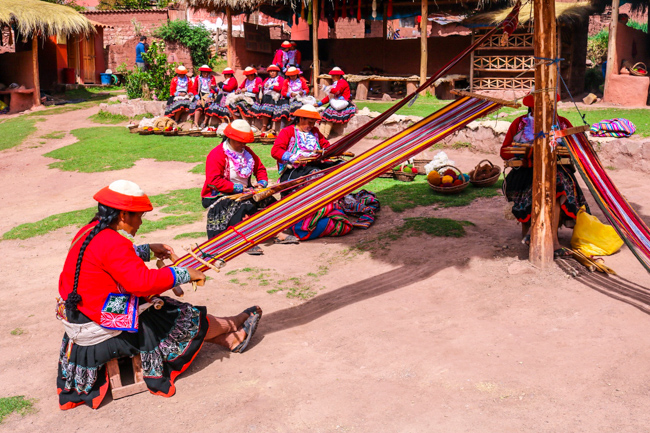 Peru's Sacred Valley
Peru's Sacred Valley
Days 4 to 7 - Hike the Inca Trail to Machu Picchu and take train back to Cusco from Aguas Calientes.
Day 8 - Tour finishes in Cusco. You can add on optional activities here such as a visit to the Rainbow Mountain for additional cost. If you need to get back to Lima you can arrange a flight and transport through G Adventures or book your own (I found my own flight and took an Uber).
G Adventures offers a variety of tours in Peru. Some Inca Trail tours are only five days long and some begin in Cusco rather than Lima, it is all to your preference. You can also reach Machu Picchu with an alternative hike such as the Salkantay Trek (different route with incentives such as less trekkers/not crowded and some disadvantages such as not being able to descend through the Sun Gate on the final day - I recommend researching which route is best for you!). G Adventures offers tours with different treks or even some tours that skip the trekking part and take the train directly to Machu Picchu. If you want to do the Inca Trail you must book your tour several months in advance as the amount of daily permits are limited.
G Adventures is known for providing excellent local guides and fairly treating their porters. Our group of 15 or so had a guide and an assistant guide who were both native to the area and spoke English, Spanish and Quechua fluently. Our guide gave us in-depth history along the way, pointed out flora and fauna and was available for any questions and to chat at all meals. He went at the head of the group and the assistant guide brought up the tail, so that any slower trekkers had support as well. I heard from other tours that some guides with other tour companies were not friendly and did not provide much information.
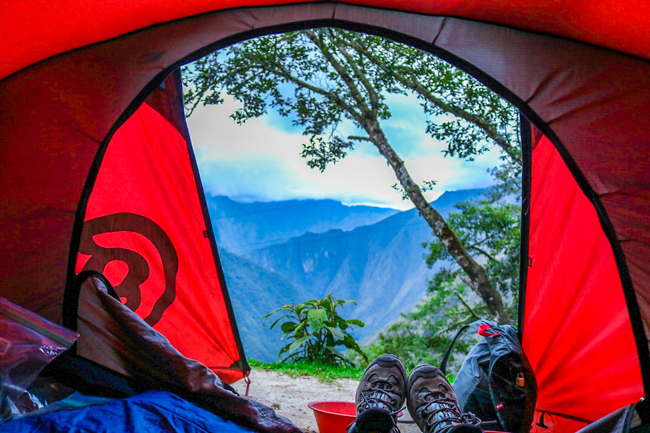 My comfortable tent with a great view Our group seemed small but the amount of gear involved required us to have more than 40 porters. These men have an extremely difficult job: they carry 20 kilograms on their back and must make it to camp several hours before the tourists to set up and cook any meals. Most are local farmers and complete a few treks a month as a second job. Therefore it is very important to tip well and make sure that you go along with the weight restrictions G Adventures gives for what they will carry for you (sleeping bag and mattress, personal items).
My comfortable tent with a great view Our group seemed small but the amount of gear involved required us to have more than 40 porters. These men have an extremely difficult job: they carry 20 kilograms on their back and must make it to camp several hours before the tourists to set up and cook any meals. Most are local farmers and complete a few treks a month as a second job. Therefore it is very important to tip well and make sure that you go along with the weight restrictions G Adventures gives for what they will carry for you (sleeping bag and mattress, personal items).
G Adventures allows you to rent a sleeping bag and mattress pad in Cusco prior to beginning the Trail for an additional fee. Their equipment is really high quality: the sleeping bags were clean and very warm; the mattress was very thick and comfortable. I definitely recommend doing this! G Adventures provides everyone with trekking poles, tents and a duffle bag to hold personal items that will be carried by the porters. We did not have any additional costs along the way but I did bring some money for souvenirs. All meals are provided during the four days of trekking the Inca Trail, however the other days not all meals are provided (this allows you to eat where you wish during free time and exploration).
There is also a dining tent with a long table and chairs, a large jug of safe drinking water and sometimes coca tea or snacks. The porters leave a bowl of warm water outside your tent. It was so nice to be able to wash my face, hands and feet after a long day. The campsite facilities varied: one had a sitting toilet and a vanity/sink area but the others had squatting toilets (a hole in the ground that can be flushed). There usually are not any facilities that you can use during the day while trekking.
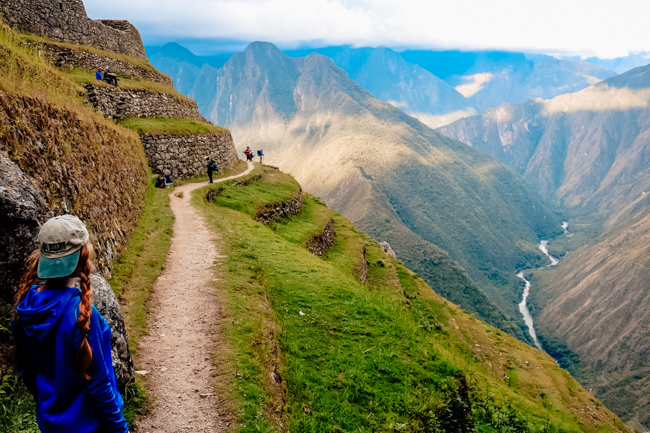 Along the Inca Trail The days of trekking are long, and once our group had exhausted the usual small talk and getting to know each other we often played games. One of my favorites was choosing a buzz word and rotating naming a song that incorporates that word until no one can think of any more before you change words.
Along the Inca Trail The days of trekking are long, and once our group had exhausted the usual small talk and getting to know each other we often played games. One of my favorites was choosing a buzz word and rotating naming a song that incorporates that word until no one can think of any more before you change words.
The porters prepared warm lunches for us at designated spots as well and they were very creative with meals. Lunch and dinner began with a soup and ended with a dessert. For breakfast we had both a full meal and a more continental style depending on the day. G Adventures is very accommodating of special diets and did an excellent job respecting my veganism. But I would also recommend bringing additional snacks if you have any restrictions. Some other members of the tour had severe food allergies and they were very accommodating to them as well.
When we arrived at Machu Picchu and finally saw the Wonder of the World many people in our group started crying. It is easy to roll your eyes at the overwhelming emotion we felt but this experience is so profound it is hard not to experience a staggering level of sentiment. We pushed ourselves beyond belief through long days of major physical challenges, we walked a historic path and saw remnants of the powerful Inca empire that few people ever will, and then at our most exhausted, amazed state we witness the most awe-inspiring Andean treasure that is Machu Picchu. My experience was a true bucket-list, once in a lifetime achievement and it was fun and terrifying, mundane and wondrous. I feel very accomplished knowing that so few people have undertaken this journey and that I was able to complete it. I really got to know the people in my group and I am still in touch with several of them. It is a testament to the friendship that occurs on the Trail that our group chat is still active every day and many in our group have planned other trips or treks together. I've taken several tours but never experienced this level of total group bonding.
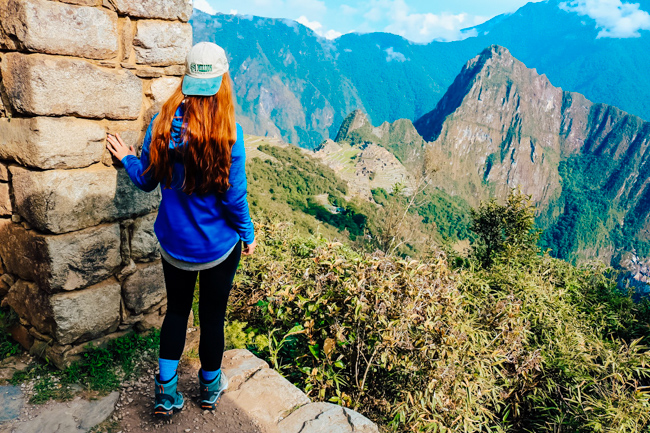 A fantastic view of Machu Picchu
A fantastic view of Machu Picchu
In our group of 15 we had travelers from the United States, Canada and the UK. The youngest in the group was 21 and hiking with his 25-year-old brother and parents who were in their 50s. The eldest trekkers were in their 60s and they did find it physically challenging, but completed each day not too far behind the rest of the group. We had another couple in their 50s, a single man in his 40s, and several single trekkers in their mid 20s. Our guide said he's had trekkers as young as eight and as mature as 71 complete the Inca Trail. Along the way I saw trekkers in other groups of all ages and nationalities - many from the US, Canada or Europe but I also met several people from South America and Asia. You will see many other groups hiking with various companies and at some points the Trail can be a little crowded, but I did not find it difficult to pass people or rest at the same spots.
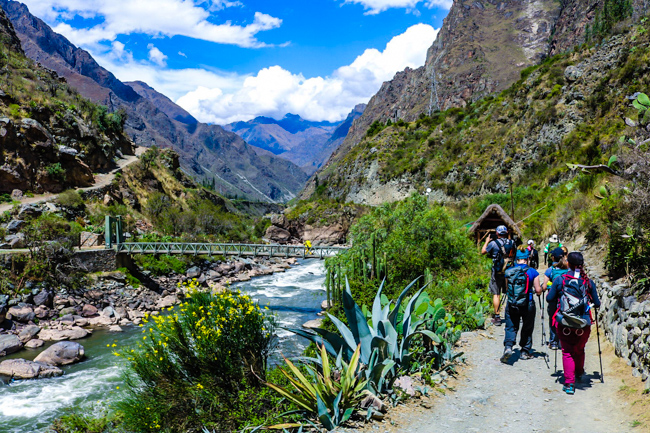 Beautiful views along the trek
Beautiful views along the trek
The Trail is very physically challenging and I did struggle some, despite being in good physical shape. I think most experiences that are extremely rewarding require you to push yourself beyond what you thought possible and this is no exception. I cannot describe the accomplishment you will feel upon reaching Machu Picchu and for those who have not experienced the demands of The Trail it is difficult to imagine how hard it can be. There were several times when I literally did not think I could take another step or thought I would not be able to finish the trek, but you keep going and make it! It is important to keep in mind during difficult stretches of the trek that most people just travel to Machu Picchu by train and you are experiencing the most historic adventure and seeing ruins that are only accessible by this route. However, if you feel that you may not be able to complete such a strenuous hike it's possible to still see Machu Picchu and have an amazing tour of the Sacred Valley, Cusco and more.
 Arrival at Machu Picchu
Arrival at Machu Picchu
The Trail is very physically demanding. I recommend incorporating regular workouts to build up strength and stamina prior to leaving. Cardio training will help with the rigorous pace that must be kept to make it to camp in time every night, but the most important aspect will be climbing stairs. If you have access to a StairMaster or similar exercise machine that would be ideal, but if not practice on any stairwell you can. The Inca Trail is hardly ever flat and the most challenging part is to continuously go up and down at altitude.
Two weeks before the tour:
I started packing for the trip early so that I had time to order anything else I might need or had forgotten. I consulted a lot of packing lists and felt thoroughly prepared, but I did not realize that on the actual trail I would not be able to bring very much. If you rent the sleeping bag and mattress pad you are only allotted 2.5 kilograms of personal items other than whatever you carry in your day bag. This is what I was able to fit:
- Two t-shirts
- Lightweight camp sandals
- Basic toiletries (I did not bring shampoo, conditioner or shower gel as I didn't plan on taking any cold showers)
- Wipes
- Sleep mask and ear plugs
- PJ pants and warm hat
In my day bag I brought:
- Water bottle and Nuun sport hydration electrolyte tabs
- Protein bars
- Bug spray and baseball cap
- Rain pants and hoodie for when it gets cold/windy at high altitudes
- DSLR camera and extra batteries
- Money and passport (Passport is required to enter the Trail. The first few days have some vendors selling essentials, so bring cash.)
- Sunscreen
- Cell phone (I kept it turned off but used it as an alarm to wake up in the mornings)
- Band-Aids for potential blisters, Pepto Bismol, Advil
- Toilet paper
In my South American travels I sometimes struggled to find filling vegan food and therefore ended up using Backpackers Pantry dehydrated meals often when in Patagonia. However, I wish I had brought some with me in my daypack for the Inca Trail as well because I often did not have enough food and felt weak. The porters provide plenty of safe boiled water so I could have easily mixed up these meals.
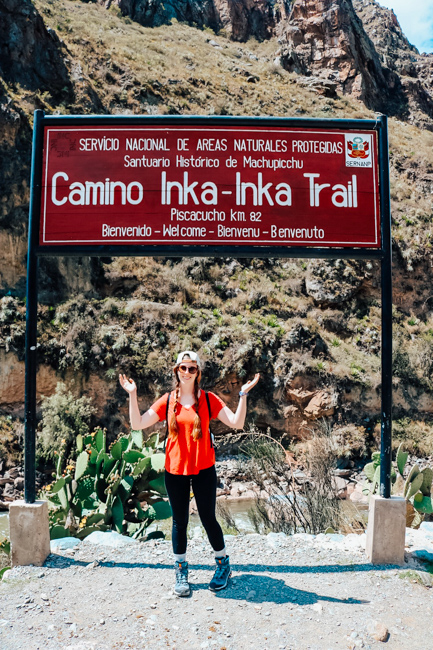 The Inca TrailA few days before leaving:
The Inca TrailA few days before leaving:
I highly recommend discussing altitude-sickness medication with your doctor. My regular physician prescribed Diamox and it did prevent many of the usual symptoms I have experienced at 12,000 feet above sea level. However, a few hours after we landed in Cusco from Lima I did feel lightheaded and needed to rest. The tour is designed so that the first day in Cusco is very laid-back and allows you to acclimate. If you arrive to Cusco on your own I recommend taking it easy the first day. Diamox needs to be started prior to arrival so read the pharmacy instructions and begin taking it a few days before you leave. Thankfully I was able to avoid the nausea and faintness I usually encounter with Diamox, but there is a side effect that I didn't enjoy and was not aware of. A few days after I had the drug in my system I began feeling tingling in my fingers. I asked my guide, who told me that it is common and I will probably begin to experience that sensation in my toes and even potentially part of my face such as my cheeks or nose. Therefore, I just used Diamox to get acclimated and did not take it throughout the entire trek as this side effect was unpleasant to me.
The day of travel:
When you fly it's always a great idea to hydrate as much as possible. But when you fly from Lima to Cusco that is especially true because drinking a lot of water can help combat any altitude sickness you may encounter and prepare you for the physical challenges ahead.
If you're interested in taking this tour (or other similar tours) from G Adventures, click here for more information on the G Adventures website or here on Tour Radar.
 Peruvian Lunch
Peruvian Lunch
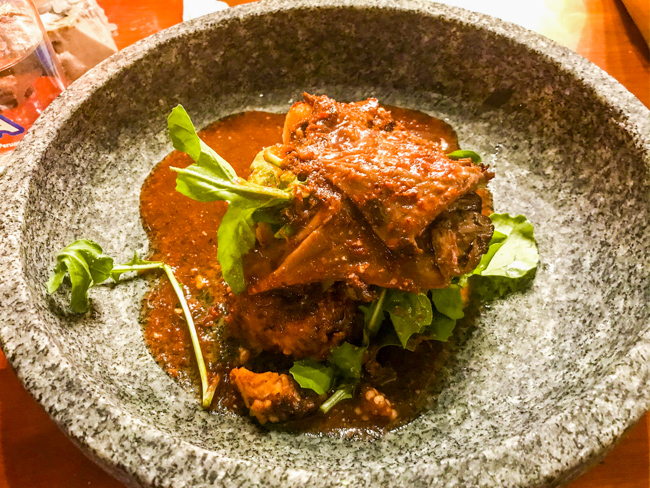 More Peruvian Food
More Peruvian Food
 At a market in the Sacred Valley
At a market in the Sacred Valley
 Are you hungry yet?
Are you hungry yet?
What is the Inca Trail?
The Inca Trail in Peru is one of the most famous treks in the world. It contains a few different routes, but the classic trail takes four days and allows the hikers to enter Machu Picchu by descending upon the ruins from the Sun Gate (original entrance). The classic trek begins at Kilometer 82, a starting point along the railroad from Cusco to Aguas Calientes (the town at the base of Machu Picchu). The trek is 26 miles long and hikers ascend to a top elevation of nearly 14,000 feet above sea level. The Inca Trail is one of the original Inca roads used in the area - its purpose was a religious and ceremonial pilgrimage to Machu Picchu - and taking the same steps as the Incan people allows you to witness many important sites that are not otherwise accessible to tour.The G Adventures Inca Discovery Tour
For this particular tour we began in Lima and transport to the other areas of the tour was provided to us. We flew from Lima to Cusco and then took a bus through the Sacred Valley to the starting point of the trek. After we arrived at Machu Picchu we departed by train and the tour finished in Cusco. I chose this tour because I wanted to spend some time in Lima and fulfill a lifelong dream of trekking the Inca Trail to Machu Picchu - the addition of time in Cusco and the Sacred Valley really felt like it would give me a comprehensive trip through Peru.
by G Adventures
$1250
8 days
Our Itinerary
Day 1 - This day consists of free time in Lima. You can book optional activities such as a city tour or cooking class at additional cost. I chose to explore on my own and visited the Miraflores Boardwalk's top attractions like the Parque de Amor and Lighthouse as well as the Huaca Pucllana ruins and colorful neighborhood of Barranco.Day 2 - Fly to Cusco; have a logistics meeting to prepare for the Inca Trail and brief city tour; spend free time exploring Cusco.
 Cusco
CuscoDay 3 - This is a jam-packed full day of exploring the Sacred Valley. We began with a weaving demonstration at the G Adventures sponsored co-op. Next we traveled to the rural village Cuyo Chico to see the process of making adobe mud houses and ceramic objects. You can purchase souvenirs that support the local people in both locations. These included activities were extremely special and gave me a great understanding of Peruvian culture. I enjoyed seeing some less-traveled areas and was happy that my tourism sponsored businesses that support these unique rural towns. Our group also got to visit two ruins sites for additional cost: Pisac and Ollantaytambo. We unanimously agreed to have this opportunity. We ended the day in the town of Ollantaytambo.
 Peru's Sacred Valley
Peru's Sacred ValleyDays 4 to 7 - Hike the Inca Trail to Machu Picchu and take train back to Cusco from Aguas Calientes.
Day 8 - Tour finishes in Cusco. You can add on optional activities here such as a visit to the Rainbow Mountain for additional cost. If you need to get back to Lima you can arrange a flight and transport through G Adventures or book your own (I found my own flight and took an Uber).
G Adventures offers a variety of tours in Peru. Some Inca Trail tours are only five days long and some begin in Cusco rather than Lima, it is all to your preference. You can also reach Machu Picchu with an alternative hike such as the Salkantay Trek (different route with incentives such as less trekkers/not crowded and some disadvantages such as not being able to descend through the Sun Gate on the final day - I recommend researching which route is best for you!). G Adventures offers tours with different treks or even some tours that skip the trekking part and take the train directly to Machu Picchu. If you want to do the Inca Trail you must book your tour several months in advance as the amount of daily permits are limited.
Tour Guides, Porters, & Equipment
The Inca Trail is heavily regulated and you are required to go with a guide so most people opt to complete the trek through a tour company. An additional benefit is that these companies employ "porters" who carry the heavy equipment, tents, etc. and set up/tear down the campsites.G Adventures is known for providing excellent local guides and fairly treating their porters. Our group of 15 or so had a guide and an assistant guide who were both native to the area and spoke English, Spanish and Quechua fluently. Our guide gave us in-depth history along the way, pointed out flora and fauna and was available for any questions and to chat at all meals. He went at the head of the group and the assistant guide brought up the tail, so that any slower trekkers had support as well. I heard from other tours that some guides with other tour companies were not friendly and did not provide much information.
 My comfortable tent with a great view
My comfortable tent with a great viewG Adventures allows you to rent a sleeping bag and mattress pad in Cusco prior to beginning the Trail for an additional fee. Their equipment is really high quality: the sleeping bags were clean and very warm; the mattress was very thick and comfortable. I definitely recommend doing this! G Adventures provides everyone with trekking poles, tents and a duffle bag to hold personal items that will be carried by the porters. We did not have any additional costs along the way but I did bring some money for souvenirs. All meals are provided during the four days of trekking the Inca Trail, however the other days not all meals are provided (this allows you to eat where you wish during free time and exploration).
What to expect on the Inca Trail
Each day you will be given a time that you need to be ready to begin trekking. The porters will wake you up and have breakfast ready at a certain time, but sometimes you might need to get up earlier to prepare. Most days require 10-12 hours of trekking so we usually needed to begin our day very early. When you arrive at camp a 2-person tent is set up for you, your mattress pad, sleeping bag and personal items are inside.There is also a dining tent with a long table and chairs, a large jug of safe drinking water and sometimes coca tea or snacks. The porters leave a bowl of warm water outside your tent. It was so nice to be able to wash my face, hands and feet after a long day. The campsite facilities varied: one had a sitting toilet and a vanity/sink area but the others had squatting toilets (a hole in the ground that can be flushed). There usually are not any facilities that you can use during the day while trekking.
 Along the Inca Trail
Along the Inca TrailThe porters prepared warm lunches for us at designated spots as well and they were very creative with meals. Lunch and dinner began with a soup and ended with a dessert. For breakfast we had both a full meal and a more continental style depending on the day. G Adventures is very accommodating of special diets and did an excellent job respecting my veganism. But I would also recommend bringing additional snacks if you have any restrictions. Some other members of the tour had severe food allergies and they were very accommodating to them as well.
Hiking the Inca Trail to Machu Picchu
by G Adventures
$1250
8 days
 A fantastic view of Machu Picchu
A fantastic view of Machu PicchuIn our group of 15 we had travelers from the United States, Canada and the UK. The youngest in the group was 21 and hiking with his 25-year-old brother and parents who were in their 50s. The eldest trekkers were in their 60s and they did find it physically challenging, but completed each day not too far behind the rest of the group. We had another couple in their 50s, a single man in his 40s, and several single trekkers in their mid 20s. Our guide said he's had trekkers as young as eight and as mature as 71 complete the Inca Trail. Along the way I saw trekkers in other groups of all ages and nationalities - many from the US, Canada or Europe but I also met several people from South America and Asia. You will see many other groups hiking with various companies and at some points the Trail can be a little crowded, but I did not find it difficult to pass people or rest at the same spots.
 Beautiful views along the trek
Beautiful views along the trekThe Trail is very physically challenging and I did struggle some, despite being in good physical shape. I think most experiences that are extremely rewarding require you to push yourself beyond what you thought possible and this is no exception. I cannot describe the accomplishment you will feel upon reaching Machu Picchu and for those who have not experienced the demands of The Trail it is difficult to imagine how hard it can be. There were several times when I literally did not think I could take another step or thought I would not be able to finish the trek, but you keep going and make it! It is important to keep in mind during difficult stretches of the trek that most people just travel to Machu Picchu by train and you are experiencing the most historic adventure and seeing ruins that are only accessible by this route. However, if you feel that you may not be able to complete such a strenuous hike it's possible to still see Machu Picchu and have an amazing tour of the Sacred Valley, Cusco and more.
 Arrival at Machu Picchu
Arrival at Machu PicchuHow to prepare
A few months before your trip:The Trail is very physically demanding. I recommend incorporating regular workouts to build up strength and stamina prior to leaving. Cardio training will help with the rigorous pace that must be kept to make it to camp in time every night, but the most important aspect will be climbing stairs. If you have access to a StairMaster or similar exercise machine that would be ideal, but if not practice on any stairwell you can. The Inca Trail is hardly ever flat and the most challenging part is to continuously go up and down at altitude.
Two weeks before the tour:
I started packing for the trip early so that I had time to order anything else I might need or had forgotten. I consulted a lot of packing lists and felt thoroughly prepared, but I did not realize that on the actual trail I would not be able to bring very much. If you rent the sleeping bag and mattress pad you are only allotted 2.5 kilograms of personal items other than whatever you carry in your day bag. This is what I was able to fit:
- Two t-shirts
- Lightweight camp sandals
- Basic toiletries (I did not bring shampoo, conditioner or shower gel as I didn't plan on taking any cold showers)
- Wipes
- Sleep mask and ear plugs
- PJ pants and warm hat
In my day bag I brought:
- Water bottle and Nuun sport hydration electrolyte tabs
- Protein bars
- Bug spray and baseball cap
- Rain pants and hoodie for when it gets cold/windy at high altitudes
- DSLR camera and extra batteries
- Money and passport (Passport is required to enter the Trail. The first few days have some vendors selling essentials, so bring cash.)
- Sunscreen
- Cell phone (I kept it turned off but used it as an alarm to wake up in the mornings)
- Band-Aids for potential blisters, Pepto Bismol, Advil
- Toilet paper
In my South American travels I sometimes struggled to find filling vegan food and therefore ended up using Backpackers Pantry dehydrated meals often when in Patagonia. However, I wish I had brought some with me in my daypack for the Inca Trail as well because I often did not have enough food and felt weak. The porters provide plenty of safe boiled water so I could have easily mixed up these meals.
 The Inca Trail
The Inca TrailI highly recommend discussing altitude-sickness medication with your doctor. My regular physician prescribed Diamox and it did prevent many of the usual symptoms I have experienced at 12,000 feet above sea level. However, a few hours after we landed in Cusco from Lima I did feel lightheaded and needed to rest. The tour is designed so that the first day in Cusco is very laid-back and allows you to acclimate. If you arrive to Cusco on your own I recommend taking it easy the first day. Diamox needs to be started prior to arrival so read the pharmacy instructions and begin taking it a few days before you leave. Thankfully I was able to avoid the nausea and faintness I usually encounter with Diamox, but there is a side effect that I didn't enjoy and was not aware of. A few days after I had the drug in my system I began feeling tingling in my fingers. I asked my guide, who told me that it is common and I will probably begin to experience that sensation in my toes and even potentially part of my face such as my cheeks or nose. Therefore, I just used Diamox to get acclimated and did not take it throughout the entire trek as this side effect was unpleasant to me.
The day of travel:
When you fly it's always a great idea to hydrate as much as possible. But when you fly from Lima to Cusco that is especially true because drinking a lot of water can help combat any altitude sickness you may encounter and prepare you for the physical challenges ahead.
If you're interested in taking this tour (or other similar tours) from G Adventures, click here for more information on the G Adventures website or here on Tour Radar.
 Peruvian Lunch
Peruvian Lunch More Peruvian Food
More Peruvian Food At a market in the Sacred Valley
At a market in the Sacred Valley Are you hungry yet?
Are you hungry yet?Share This Article
Budget Your Trip
 Budget Your Trip is all about finding out how much everything costs so that you can travel cheaper and longer. With average daily travel costs that are calculated from the budgets of real travelers, you can find out how much money you need to plan your next adventure. On this website you can also find travel advice, tour information, accommodation reviews, and activity suggestions for thousands of destinations around the world.
Budget Your Trip is all about finding out how much everything costs so that you can travel cheaper and longer. With average daily travel costs that are calculated from the budgets of real travelers, you can find out how much money you need to plan your next adventure. On this website you can also find travel advice, tour information, accommodation reviews, and activity suggestions for thousands of destinations around the world.
Pin This Page
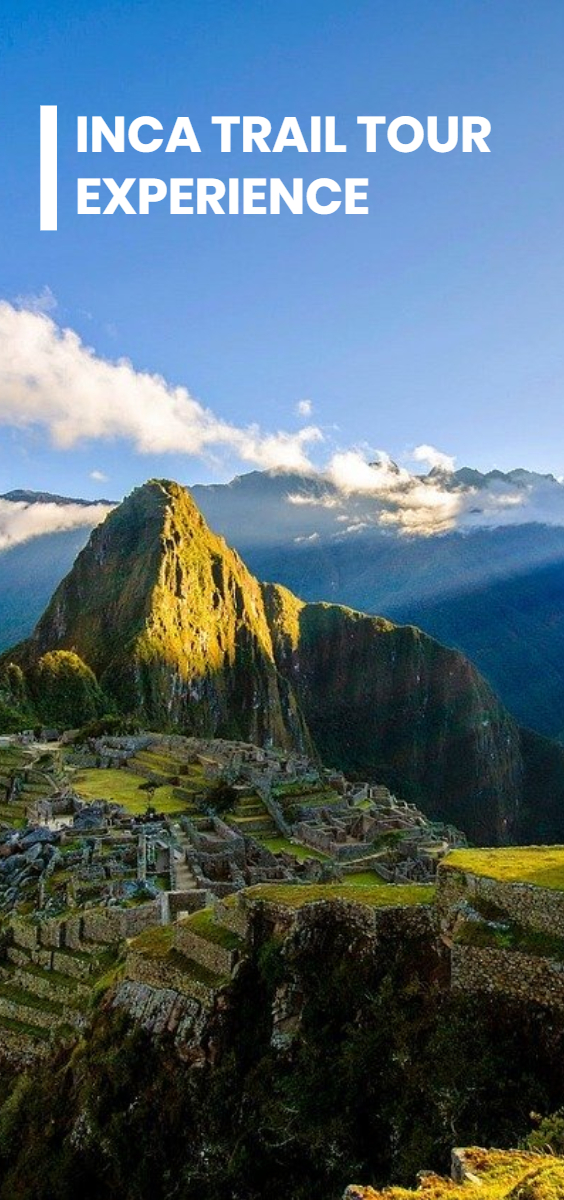
Some of the links on this website are sponsored or affiliate links which help to financially support this site. By clicking the link and making a purchase, we may receive a small commission, but this does not affect the price of your purchase.